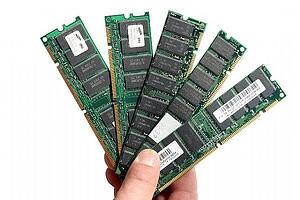 So you’ve decided to purchase what will be your company’s dedicated server. That’s great! Your company intranet or website will undoubtedly be forever grateful for your decision to invest in its future. As you choose your new server’s specifications, you breeze through the CPU options, hard drive choices and RAID configuration ... and then it’s time to make your RAM selection. As you poar over the multiple RAM options available, you ask yourself, “how much RAM do I really need, anyway?” Let’s start at the beginning: RAM (random access memory) is an essential component of any hardware that’s designed to perform computing tasks. RAM allows space for your computer or server to write and read information to be accessed by the CPU. When folks talk about a computer’s memory, they’re most likely referring to its RAM.
So you’ve decided to purchase what will be your company’s dedicated server. That’s great! Your company intranet or website will undoubtedly be forever grateful for your decision to invest in its future. As you choose your new server’s specifications, you breeze through the CPU options, hard drive choices and RAID configuration ... and then it’s time to make your RAM selection. As you poar over the multiple RAM options available, you ask yourself, “how much RAM do I really need, anyway?” Let’s start at the beginning: RAM (random access memory) is an essential component of any hardware that’s designed to perform computing tasks. RAM allows space for your computer or server to write and read information to be accessed by the CPU. When folks talk about a computer’s memory, they’re most likely referring to its RAM.
The more RAM a computer has, the number of times the CPU has to read data from the hard disk is reduced. The benefit in this is a computer that runs more quickly, since RAM is much faster than a hard disk. Let’s get back to the original question: So how much RAM does your dedicated server need? Although there’s no formula to find out the exact amount of RAM you’ll need, by knowing what the server will be used for, how much traffic you assume it will take on, and what applications it will be running, we can make a pretty good assumption of how much RAM your server will require.
How Much RAM Is Right For You?
The fine folks over at WebmasterFormat wrote a great article on figuring out how much RAM you’ll need for your dedicated server. In it, they list seven issues to consider when deciding how much RAM your server will need to perform to its maximum potential:- Traffic – How much traffic will the server be taking on? More traffic = more RAM, less traffic = less RAM.
- Operating System – In most cases, the operation system you choose for your server will present you with minimum RAM requirements. For example, Windows Server needs at least 512MB RAM, while 2 GB RAM is recommended for Windows Server 2008.
- Static or Dynamic Site – Dynamic sites require more RAM. Scripting languages such as PHP and SQL databases increase your server’s need for RAM.
- Content Management Systems – Will you be using a CMS such as Joomla, Drupal or Wordpress? If so, be prepared to add that RAM.
- Control Panel – If you use a control panel, you’ll most likely need more RAM to run it.
- Applications – If your server will also be handling tasks such as email, firewall, spam protection and antivirus applications, these may also bump up your need for RAM.
- Caching – If your site (or parts of it) is chached by a proxy server, it will improve performance and limit RAM usage. If your site contains static content that rarely changes (i.e., images), set that content to cache and reap the benefits of reduced RAM usage.
As we looked at when we discussed server form factor, deciding how much RAM you need depends primarily on your company’s unique needs and intended usage. Of course, there is no such thing as “too much ram”, but for companies working on a budget, shelling out for maximum RAM may not be an option.
Keep in mind that since many of servermonkey.com's servers are fully customizable, you have the freedom to choose exactly how much RAM will go into your server. Example: Dell PowerEdge 1950 2-Port.
And as always, if you need help deciding how much RAM your server needs, feel free to contact our IT experts at 1-855-4SRVERS to discuss your options. It’s our goal to make your next server-buying experience a pleasant one.











